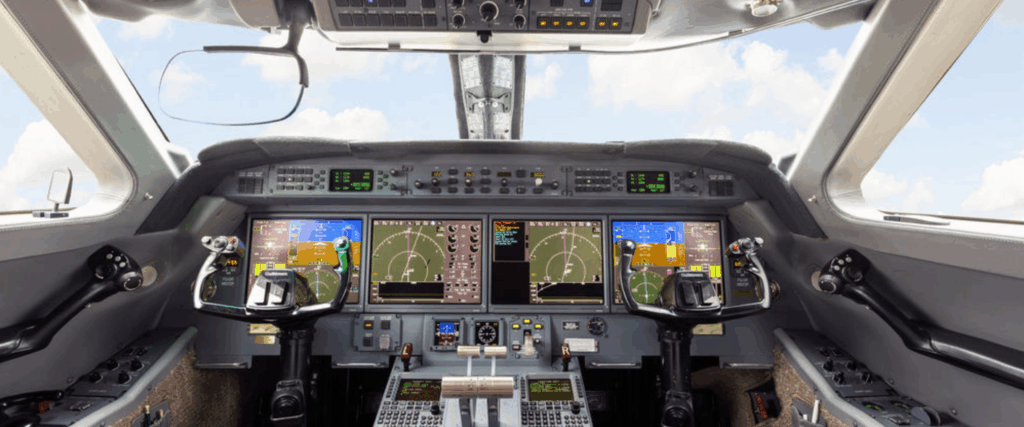Selling a business aircraft is no longer as simple as listing it and waiting for the phone to ring. In today’s more balanced 2025 marketplace, buyers have choices — and they’re approaching acquisitions with increased scrutiny. For sellers, this means that pricing discipline is the single most important factor in achieving a timely, profitable transaction. Price too high, and your aircraft risks languishing on the market, stigmatized by too many days without activity. Price too low, and you leave significant money on the table. The key is finding that sweet spot where your aircraft is positioned attractively, yet fairly, relative to the competition.

THE CHANGING MARKET LANDSCAPE
From 2020 through 2022, limited supply allowed sellers to command premium prices, often well above VREF or Bluebook values. Multiple buyers competed for scarce inventory, and aircraft routinely traded in days, sometimes sight unseen. That environment has shifted. Inventory levels are climbing gradually, financing costs are higher, and buyers are more selective. Sellers who still rely on the “name your price” approach from the recent boom are discovering their aircraft sit on the market longer and ultimately sell for less after repeated price reductions.

THE SCIENCE AND ART OF PRICING
Pricing is both a science and an art. The science is grounded in data:
Market Comps: Evaluate actual transaction data from recent comparable sales, not just asking prices. Buyers today are well-informed and will not overpay relative to the market.
VREF and Bluebook Benchmarks: These are useful starting points, but they lag real-time shifts. Supplement them with AIRCRAFTNET and AMSTAT data, as well as insight from active brokers.
Maintenance Status: Aircraft with engines and APUs on programs, inspections up to date, and strong logbook continuity command premiums. Conversely, aircraft facing upcoming major events (like a 96-month inspection or engine overhaul) must be discounted accordingly.

THE ART OF PRICING LIES IN MARKET PSYCHOLOGY
Days on Market: An aircraft priced correctly from the start generates activity, showings, and often multiple offers. Overpriced aircraft grow stale and force sellers into reactive reductions.
Buyer Perception: Buyers interpret unrealistic pricing as a signal the seller is inflexible or uninformed, which can discourage serious inquiries.
Competitive Positioning: If three comparable aircraft are on the market, pricing even slightly below the peer set can make yours the first to sell.
COMMON PITFALLS TO AVOID
Anchoring to Past Highs: Just because a similar aircraft sold for a record price in 2022 doesn’t mean that valuation is realistic in 2025.
Ignoring Cosmetics: Paint, interior condition, and cabin connectivity matter. Buyers are influenced by aesthetics as well as technical pedigree.
Neglecting Global Buyers: International interest in U.S.-based aircraft is strong, but foreign buyers often require added flexibility on logistics and closing. Pricing should reflect that broader audience.

CREATING A PRICING STRATEGY
The most effective sellers work with their broker to create a strategy that balances speed and value. This includes:
Initial Positioning: Launch at a price point that generates immediate activity within the first 30–60 days.
Monitoring Activity: Track inquiries, showings, and feedback. If momentum slows, be prepared to adjust.
Structured Reductions: Plan reduction milestones rather than making ad hoc cuts. This creates clarity and avoids signaling desperation.
Presentation Matters: High-quality photography, digital brochures, and full record scans (via platforms like Bluetail) elevate buyer perception and justify pricing.
A REAL-WORLD EXAMPLE
Consider two nearly identical midsize aircrafts listed in 2024. One was priced 10% above the market, sat unsold for nine months, and eventually closed below fair market value after repeated cuts. The other was priced competitively from day one, generated immediate showings, and closed within 60 days at a stronger net to the seller. The difference was strategy, not aircraft quality.

CONCLUSION
In a competitive market, buyers are savvy, data-driven, and selective. Sellers who price strategically — factoring in pedigree, programs, and market psychology — will achieve faster transactions and stronger outcomes. Those who cling to unrealistic expectations risk longer holding periods and lower net proceeds.
At Holstein Aviation, our IADA-certified team brings real-time market intelligence, decades of transaction experience, and global reach to help sellers price strategically. From valuation analysis to professional presentation, we position your aircraft for maximum visibility, credibility, and return in today’s marketplace.